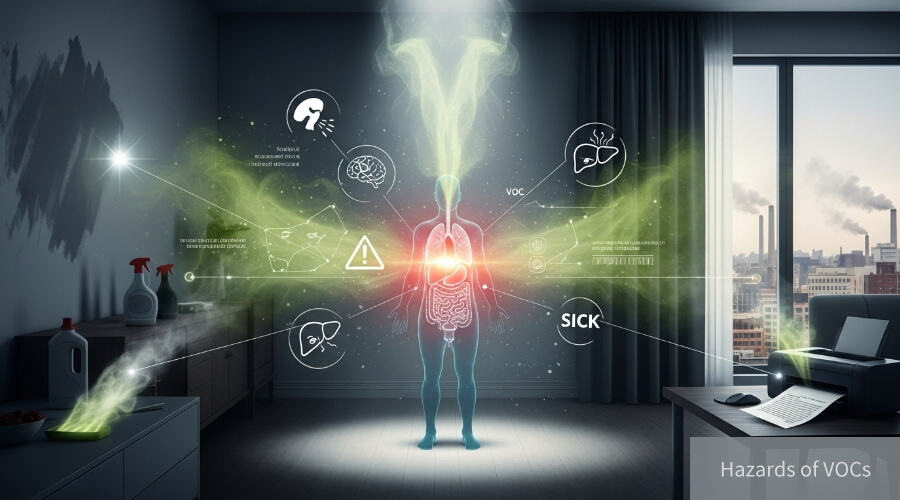Among over 900 currently identified indoor chemical and biological substances, at least 350 are volatile organic compounds (VOCs), present at concentrations below 1 ppb. More than 20 of these are known carcinogens or mutagens. Although individual concentrations are low, the diversity of VOCs leads to their collective classification as TVOC (Total Volatile Organic Compounds). The combined toxic effects of multiple VOCs coexisting indoors cannot be overlooked.
Common categories of TVOCs include alkanes/cycloalkanes, aromatic hydrocarbons, alkenes, alcohols, phenols, ketones, and terpenes. The most frequently observed harm to humans includes irritation of the eyes, nose, and throat, leading to symptoms such as:
lEye pain, dryness, increased blinking, and tearing;
lDryness, pain, nosebleeds, congestion in the nasopharynx, along with coughing, hoarseness, and altered sense of smell;
lThroat inflammation and redness;
lSkin dryness, itching, stinging, and erythema.
lIn severe cases, elevated TVOC levels can cause neurological dysfunction, cognitive impairment, and allergic pneumonia.
Common detection methods for VOCs include gas chromatography-flame ionization detection (GC-FID), Fourier-transform infrared spectroscopy (FTIR), and photoionization detection (PID). Our company strongly recommends the solid-state polymer VOC sensors from Germany’s SEC, which offer multiple measurement ranges including 0–200 ppm, 0–1000 ppm, 0–2000 ppm, and 0–5000 ppm. These sensors are user-friendly, cost-effective, and widely applied in industries such as printing and dyeing, as well as air quality monitoring.

 Hot News
Hot News2025-10-29
2025-10-22
2025-10-28
2025-10-28
2025-10-28
2025-09-15